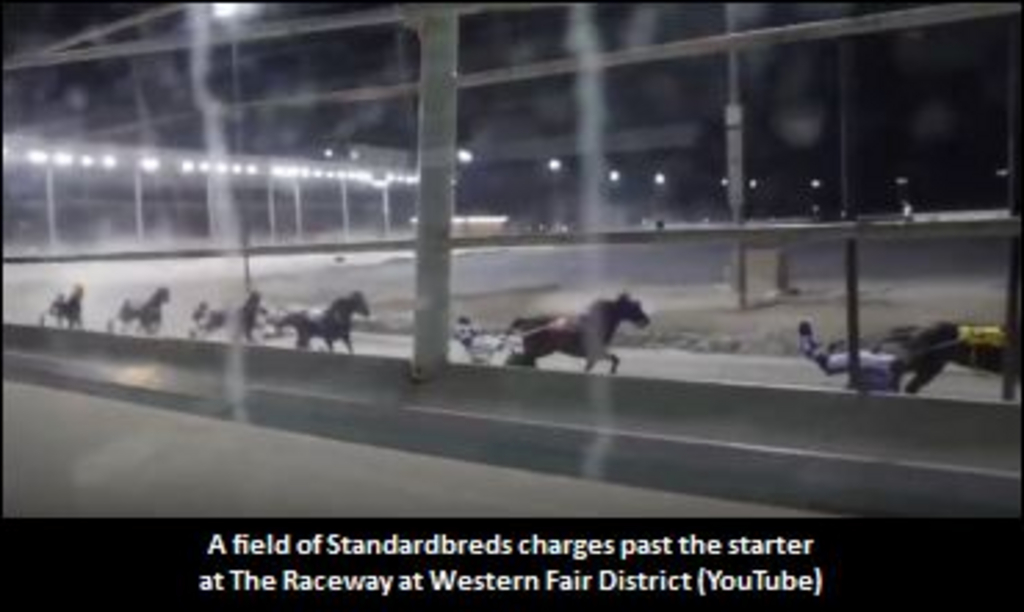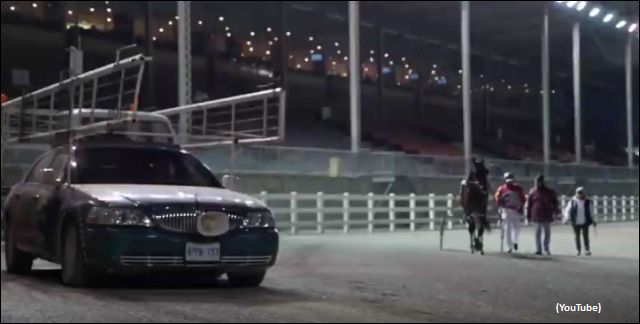
You’ve watched thousands of harness races and have seen the starter an equal amount of times, yet only a select few get the opportunity to hop in the vehicle for a first-person perspective. Let’s just say that getting a Standardbred race underway isn’t as simple as some may imagine.
Brad Pittock, the starter at The Raceway at Western Fair District, Hiawatha Horse Park and Clinton Raceway, has taken the time to discuss the ins and outs of getting a harness race underway without issue.
.jpg)
A field begins to line up behind the starter at The Raceway at Western Fair District.
“There’s a gentleman that steers the car, and we have a hand accelerator with a cable that is connected to the foot accelerator, so he can feel the accelerator going down,” Pittock, who also knows a thing or two about getting horses to the races, recently told COSA TV.
Pittock continued, stating that, “basically, and ideally, you’d like to run it like a golf swing, where you would just continually pick up speed and flow away from the horses. You don’t want to start and take off on them. You just want them to lead out on their front foot. So that’s the thing… that’s where the consistency comes with the speed of the gate, and you just try to have the same rhythm and cadence. Obviously, better horses may go at a quicker rate, but if you have the same rhythm it works the best.”
Pittock, who has started approximately 25,000 races over the course of his career, has seen quite a bit when it comes to starting races in southern Ontario. He has spent roughly 8,000 hours in a starting car and has dealt with a good deal of adverse conditions. It’s not easy being in a full-sized vehicle with a wingspan of 40 to 50 feet that is holding back thousands of pounds of fine-tuned equine on the best of days.
“I’ve started races on foggy nights and it’s a little unnerving,” Pittock explained. “You call them and you can’t see further than about 25 feet, but you can hear them coming, and then basically they come out of the fog and they’re there. But after you’ve done it you kind of get assimilated to it, but the first few times I did that – when you can hear them coming, but you couldn’t see them – were definitely a challenge.”



Good job Brad and many
Good job Brad and many thousands more.